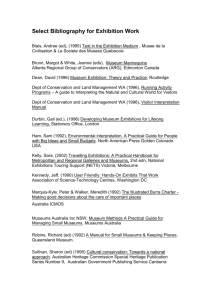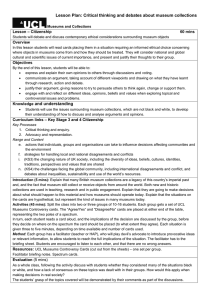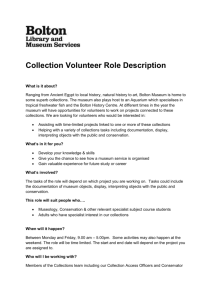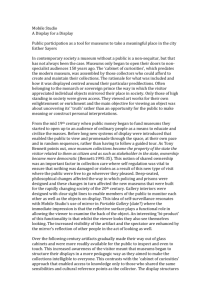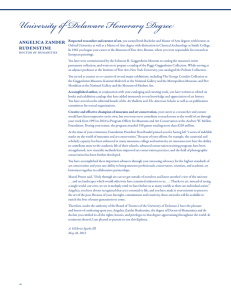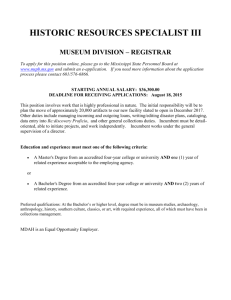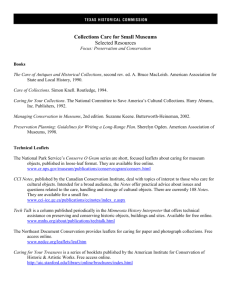Storage– Planning space and fittings
advertisement
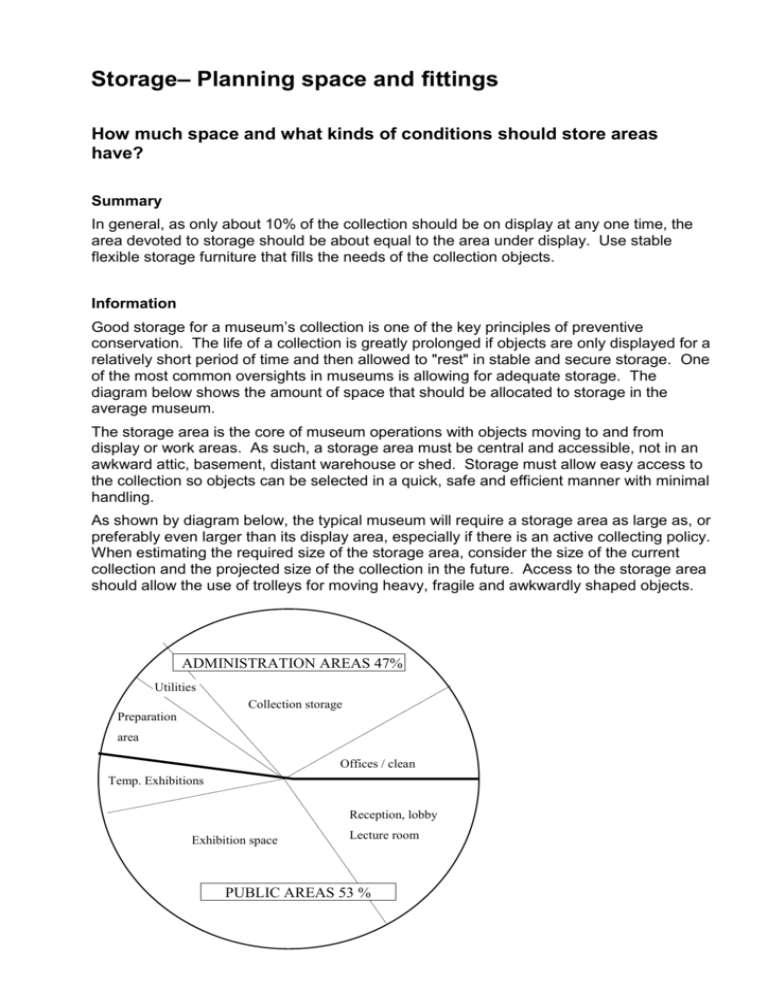
Storage– Planning space and fittings How much space and what kinds of conditions should store areas have? Summary In general, as only about 10% of the collection should be on display at any one time, the area devoted to storage should be about equal to the area under display. Use stable flexible storage furniture that fills the needs of the collection objects. Information Good storage for a museum’s collection is one of the key principles of preventive conservation. The life of a collection is greatly prolonged if objects are only displayed for a relatively short period of time and then allowed to "rest" in stable and secure storage. One of the most common oversights in museums is allowing for adequate storage. The diagram below shows the amount of space that should be allocated to storage in the average museum. The storage area is the core of museum operations with objects moving to and from display or work areas. As such, a storage area must be central and accessible, not in an awkward attic, basement, distant warehouse or shed. Storage must allow easy access to the collection so objects can be selected in a quick, safe and efficient manner with minimal handling. As shown by diagram below, the typical museum will require a storage area as large as, or preferably even larger than its display area, especially if there is an active collecting policy. When estimating the required size of the storage area, consider the size of the current collection and the projected size of the collection in the future. Access to the storage area should allow the use of trolleys for moving heavy, fragile and awkwardly shaped objects. ADMINISTRATION AREAS 47% Utilities Collection storage Preparation area Offices / clean workshop Temp. Exhibitions Reception, lobby Exhibition space Lecture room PUBLIC AREAS 53 % From a preservation viewpoint, it is essential that temperature and relative humidity (RH) in storage areas be at a constant level as with the display area. Lighting is only necessary for placement and retrieval of objects, leave lights turned off when the storage is not in use and eliminate all natural light. As storage is about access as well as conservation, any design for a storage area should take into account the need for easy access to all of the collection. Storage can either be designed so that like objects are stored together – for example, all large objects in one place, all small objects in another, paper-based objects in one cabinet, textiles in another. Alternatively, storage can be designed along thematic lines – all objects related to sports together, all objects related to council history together etc. All rows, bays, shelves, cupboards, cabinets, drawers, tubs etc should be numbered and labelled. Well-designed, appropriate storage for the collection is one of the most important aspects of a museum and a vital investment in the longevity of the collection. Storage tips for particular object types: Smaller objects (eg. medals, buttons, jewellery) can be individually wrapped in acid free tissue and stored in stackable plastic crates or tubs. Do NOT use acid free tissue to pack silk. Silk requires buffered paper. Map or plan cabinets can provide very useful storage space for objects that require flat storage. Vertical mesh is suitable for framed works in sound condition. Hanging storage may be required for some textiles or large items such as wallhangings, rugs etc. that may be rolled. Pallets are useful for storing large or heavy objects. References and further reading: Heritage Collections Council, reCollections Caring for Collections Across Australia, Managing Collections – Handling, Transportation, Storage and Display Museums Australia Inc (NSW), Museum Methods, A Practical Manual for Managing Small Museums, Section 4 Preventive Conservation Links: http://www.collectionsaustralia.net/sector_info_item/3 Collections Australia Network, reCollections: Caring for Collections Across Australia http://mgnsw.org.au/resources/fact_sheets/ Museums and Galleries NSW, Fact Sheets and Technical Information Source: MAP/Reviewer: Zoe Scott/Edit LLW Dec 2006, reviewed JH April 2010
